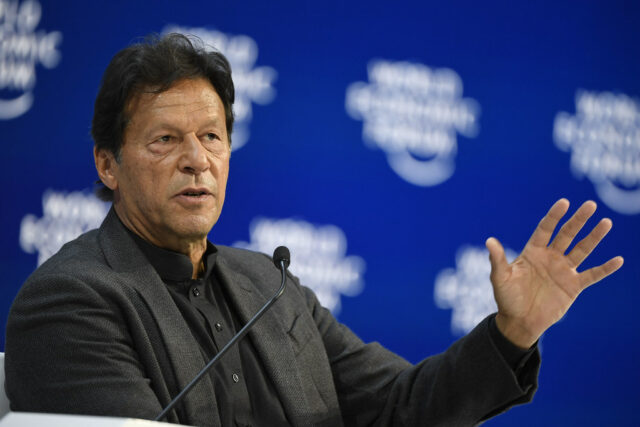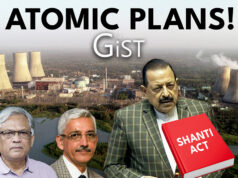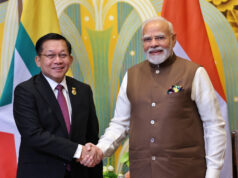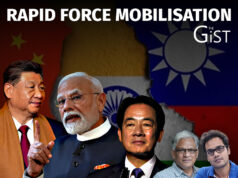NEW DELHI: Pakistan has recently released a version of its National Security Policy, the first such document brought out publicly in the country. The document has the imprimatur of Dr Moeed W. Yusuf, who was earlier the Special Assistant to the Prime Minister of Pakistan on National Security Division and Strategic Policy Planning, later re-designated as the National Security Adviser by Prime Minister Imran Khan.
Drawing from his experience as former associate vice president at the Asia Center at the United States Institute of Peace, Washington, D.C, Dr Yusuf has managed to provide a scholarly appeal to the document, with clever use of English language that could impress uninitiated international audiences, prima facie.
From Pakistan’s strategic perspective, the document feeds into the ongoing efforts of the ‘miltablishment’ to reinvent itself as a ‘change-agent’ of a new narrative, based in prioritization of geo-economics as the key driver on national priorities, rather than the earlier paradigm based in pure geopolitics. Essentially, given the precarious economic situation facing Pakistan, and its fallen international standing after the Taliban victory in Afghanistan, the reality has dawned upon the miltablishment that it cannot be business as usual, of running with the hares and hunting with the hounds.
Therefore, the NSP has to be seen as part of the focused effort to change the international perception of Pakistan as a ‘national security state’, obsessed with chasing an elusive parity with India and maintaining the dominance of its military in every sphere, at any cost.
The document has incorporated all the right terms that would appeal to Western audiences. Sample some: “safety, security, dignity and prosperity of the people”, “sustainable and inclusive economic growth”, “preservation of diverse cultural heritage”, “good governance to strengthen the state-citizen contract”, “ensure transparency and accountability”, “strengthening the human security pillar of comprehensive national security”, “seeking a peaceful neighbourhood based on mutual coexistence, regional connectivity, and shared prosperity”, “protection of the fundamental rights of all citizens as enshrined in the Constitution”, “Pakistan has been acknowledged globally for taking positive strides towards creating a strong financial monitoring system to prevent terror financing”, and “…it is imperative that we reinforce our coherent national identity based on the principle of unity in diversity”. Repeated emphasis on enhancing trade, investment and connectivity is also given to make a mark in international business circles.
A finer reading of the document reveals that from India’s point of view, the publication is nothing but a sophisticated exercise in insincerity. Almost all direct and indirect references to India have a negative connotation. Perhaps, the only saving grace in the entire document is the line “Pakistan, under its policy of peace at home and abroad, wishes to improve its relationship with India” (page 36, under “India”), and the restoration of Article 370 of the Indian Constitution by India is not mentioned as a pre-condition in the context of any bilateral proposition. Further, the document does not contain the absurd new political map of Pakistan released by Prime Minister Imran Khan in August 2020, which was later publicised by Dr Mooed Yusuf, the lead author of this document.
There are eight specific negative references to India in the document, which make the exercise an effort at sophisticated insincerity. These are summarised as follows:
- “Westward connectivity is also a significant driver for Pakistan’s continued push for regional peace and stability in Afghanistan, which is ever more important given that eastward connectivity is held hostage to India’s regressive approach” (page 17, under “Trade, Investment and Connectivity”).
- “Special attention is required to manage lingering border disputes which continue to pose security threats, particularly along the Line of Control and Working Boundary with India where ceasefire violations by India threaten civilian lives and property while endangering regional stability” (page 24, under “Securing our Borders”).
- “With a regressive and dangerous ideology gripping the collective conscience in our immediate neighbourhood, the prospects of violent conflict have grown immensely. The possibility of use of force by the adversary as a deliberate policy choice cannot be ruled out” (page 24, under “Conventional Military Threats”).
- “The self-professed role of any one country as a so-called net-security provider in the wider Indian Ocean would affect the region’s security and economic interests negatively. Multi-directional challenges in the maritime domain include cyber intrusion and surveillance of our sea lines of communication along the Indian Ocean, among others” (page 25, under “Maritime Competition”).
- “The expansion of India’s nuclear triad, open-ended statements on nuclear policy, and investments in and introduction of destabilizing technologies disturb the strategic balance in the region” (page 25, under “Strategic Stability”).
- · “Towards the immediate East, bilateral ties have been stymied as a consequence of the unresolved Kashmir dispute and India’s hegemonic designs” (page 35, under “External Context”).
- “India’s illegal and unilateral actions of August 2019 have been rejected by the people of Indian Illegally Occupied Jammu and Kashmir (IIOJK). Indian occupation forces continue to undertake human rights abuses and oppression through war crimes, crimes against humanity, and genocidal acts in IIOJK. In addition, India continues to create false propaganda around the Kashmiri resistance to hide its illegal actions” (page 35, under “Jammu and Kashmir”).
- “The political exploitation of a policy of belligerence towards Pakistan by India’s leadership has led to the threat of military adventurism and non-contact warfare to our immediate east. Growing Indian arms build-up, facilitated by access to advanced technologies and exceptions in the non-proliferation rules, is a matter of concern for Pakistan. Besides impacting regional stability, such policies of exceptionalism also undermine the global non-proliferation regime. India’s pursuit of unilateral policy actions on outstanding issues are attempts to impose one-sided solution” (page 36, under “India”).
The document has other references to domestic security issues which are nothing but clever attempts to paper over the serious problems that have not been acknowledged, let alone acted upon with due sincerity by Pakistan, despite overwhelming evidence to the contrary. The most blatant ones concern terrorism and narcotics trafficking. In the discussion under “Terrorism”, one finds the absurd claim that “Pakistan pursues a policy of zero tolerance for any groups involved in terrorist activities on its soil” and “…with national resolve and dedication, Pakistan has fought one of the most successful wars against terrorism in the past two decades”. Subsequently, under “Narcotics and Organised crime”, it is claimed that “Pakistan has been declared a poppy-free country since 2001”. The vacuity of this statement is belied by the fact that a majority of Afghanistan origin opium, heroin and methamphetamine is trafficked through Pakistan, with tacit support of state agencies, primarily the Inter-Services Intelligence.
A major lacuna of the document is the absence of any serious proposition concerning addressing the serious human rights situation in Afghanistan. There is also a subtle endeavor to underemphasize the burgeoning dependence upon China on vital matters of national interest. The publication has already come under sharp criticism by domestic critics within Pakistan, who have called it high on platitude and low on substance. Despite its claim of bringing in the factor of “geo-economics”, alongside “geo-strategy”, the publication does not make any commitment to reduce or rationalize the unsustainable Defence Budget of Pakistan, which remains largely out of public scrutiny.
The document adopts a slick presentation style, summarising the discussion of its six thematic sections in Policy Objectives, at the end of each relevant chapter. There is however, no discussion on the “hows” of the vaunted objectives listed in enigmatic language. This is a major weakness of the document – in absence of even broad allusion to the “how” and “who” components of the Policy Objectives described, the infirmities of the discussion will only become magnified in time.
The document has been given a time frame of four years by the authors. As a sincere exercise in self-delusion, and a ploy for diverting the attention of the world from the real problems which strike at the root of Pakistan’s anachronistic existence, the document may become redundant in less than half its intended time frame, on an optimistic note. For India, it is another proof in evidence that the insincere miltablishment of Pakistan will use every trick in the book to buy time and attempt to encash tactical peace to achieve its unflagging grand strategic objective of remaining the ultimate arbitrators of Pakistan’s destiny.





